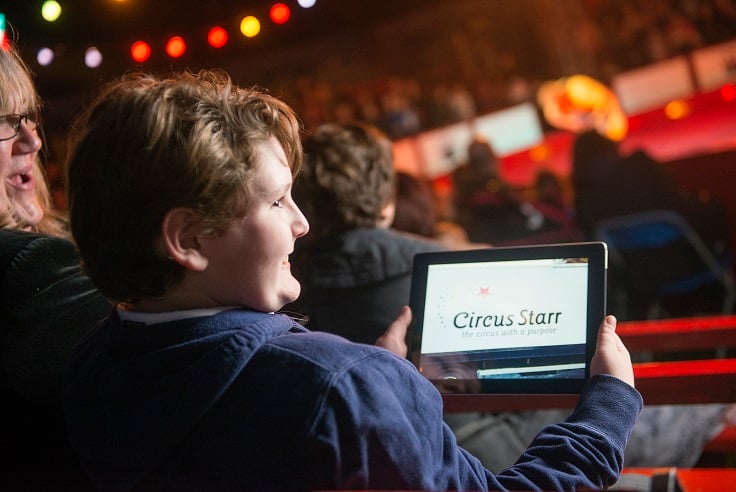
Creative access
Digital technologies offer the arts the opportunity, not only to improve access, but to enhance the experience of all audience members. Paul Glinkowski highlights some projects that are doing just that.
“Access isn’t simply about the things that you can add on at the end – it’s also about how you can reach out to a much wider audience.” So says Jo Verrent, Senior Producer at Unlimited in a new film on digital accessibility in the arts that showcases some of the pathfinding projects funded by the Digital R&D Fund for the Arts.
A striking feature of the fund is the amount of innovation and creative thinking it has sparked in organisations that have diversity and accessibility at the heart of what they do. The insights from projects experimenting with new ways to give audiences an enhanced experience using digital technology show what a difference it makes when the needs of users are taken into consideration during the development and testing phase. It can’t be an afterthought.
“Sometimes what can seem like restrictions can often really lead to breakthroughs in your creative processes”
Cheshire-based Circus Starr, for example, has used its R&D funding to develop a family-friendly interactive app designed to help prepare young people on the autistic spectrum for their first visit to the circus. It has adapted the ‘social stories’ method, which provides short descriptions of a particular situation, event or activity to help them learn about what to expect in that situation. Extensive testing of the app-in-development with its youthful target users has made sure that the resulting product is fun, user-friendly and leaves families with a legacy of their visit in the form of their own images, captions and footage uploaded after the event. Having proved its value in a circus arena, Circus Starr believes the app could be repurposed to help prepare young children, with or without autism, to explore other types of live performances.
Stagetext, which provides captioning and live subtitling services to help arts venues make their activities more accessible to people who are deaf or hard of hearing, was supported to experiment with automatic simultaneous captioning, eliminating the need for a human intermediary. It has tested a new CaptionCue system, including a two-day trail in the National Theatre’s temporary theatre with encouraging results. If the technology can be further perfected, it will remove the need for a person to operate captioning systems in theatres, thereby reducing costs. As well as improving the theatre-going experience for people with hearing impairments, it could also be used to generate foreign language captions for theatre-goers who don’t speak English as their first language, opening up additional revenue opportunities from overseas visitors.
As well as supporting people with disabilities to have a better experience of the arts, digital technologies with an access dimension can also be used to enhance the creative performance itself. This was demonstrated in the R&D project devised by Extant, a performing arts company for visually impaired artists. Maria Oshodi, its Artistic Director and CEO, says: “Sometimes what can seem like restrictions can often really lead to breakthroughs in your creative processes.” To give dramatic form to EA Abbott’s 1884 novella Flatland, Extant created an immersive installation of sensation and sound at Dilston Grove, a cavernous former church building in Southwark Park in London. The audience was blindfolded and invited to explore, using their other senses, the textures, space and sounds that made up this strange, two-dimensional world. To help them, they were given a hand-held robotic device to guide them, with the aid of cutting-edge haptic technology, on their adventure through Flatland.
Each of these projects, along with several other audience-facing digital experiments with access concerns at their core, have informed the development of an accessibility-themed guide and film that are now available on the Digital R&D Fund website. They offer tips and inspiration to organisations looking to digital technologies to help them enliven their offer to audiences of all kinds and abilities. As Jo Verrent affirms in her contribution to the film: “Creativity can really come to the fore in making sure that you create work that isn’t standard or boring, but actually has that kind of access embedded within it so that it can reach everybody. It won’t just impact on disabled people, it will impact on everyone.”
Paul Glinkowski is Senior Manager, Creative Media at Arts Council England.
www.artscouncil.org.uk
This article, sponsored and contributed by the Digital R&D Fund for the Arts, is one in a series of articles on the theme Making digital work.
Join the Discussion
You must be logged in to post a comment.